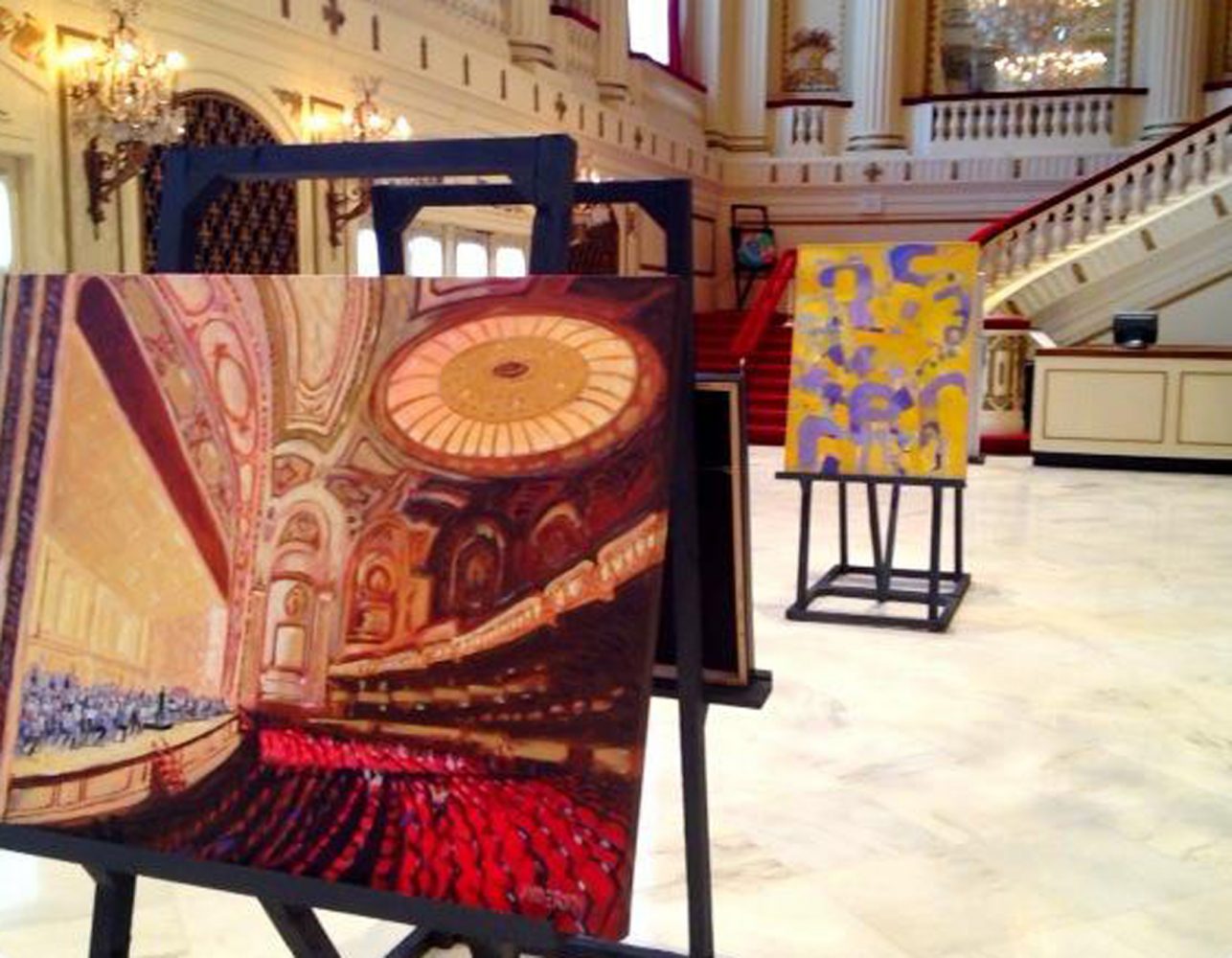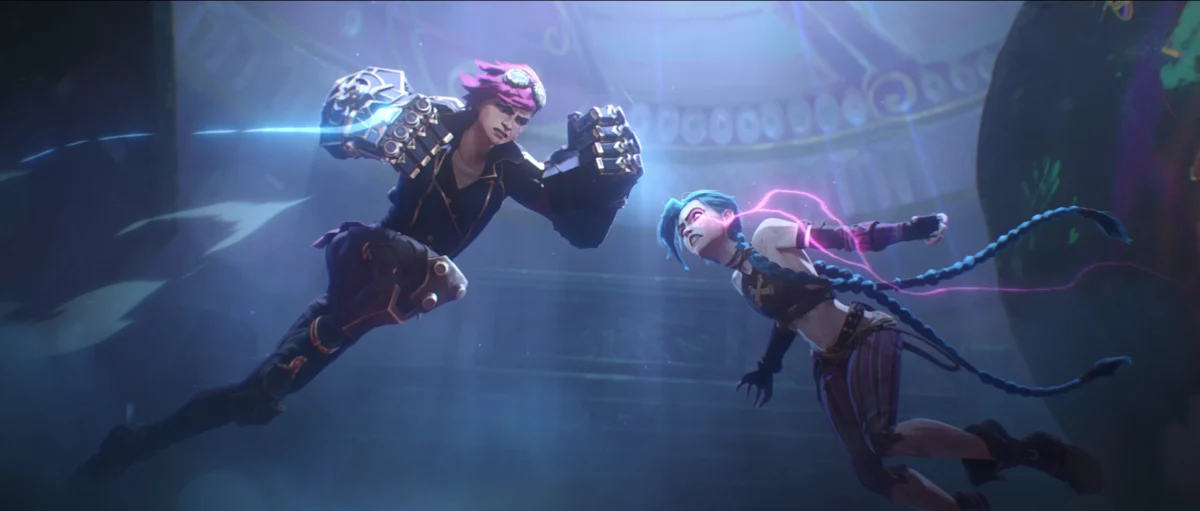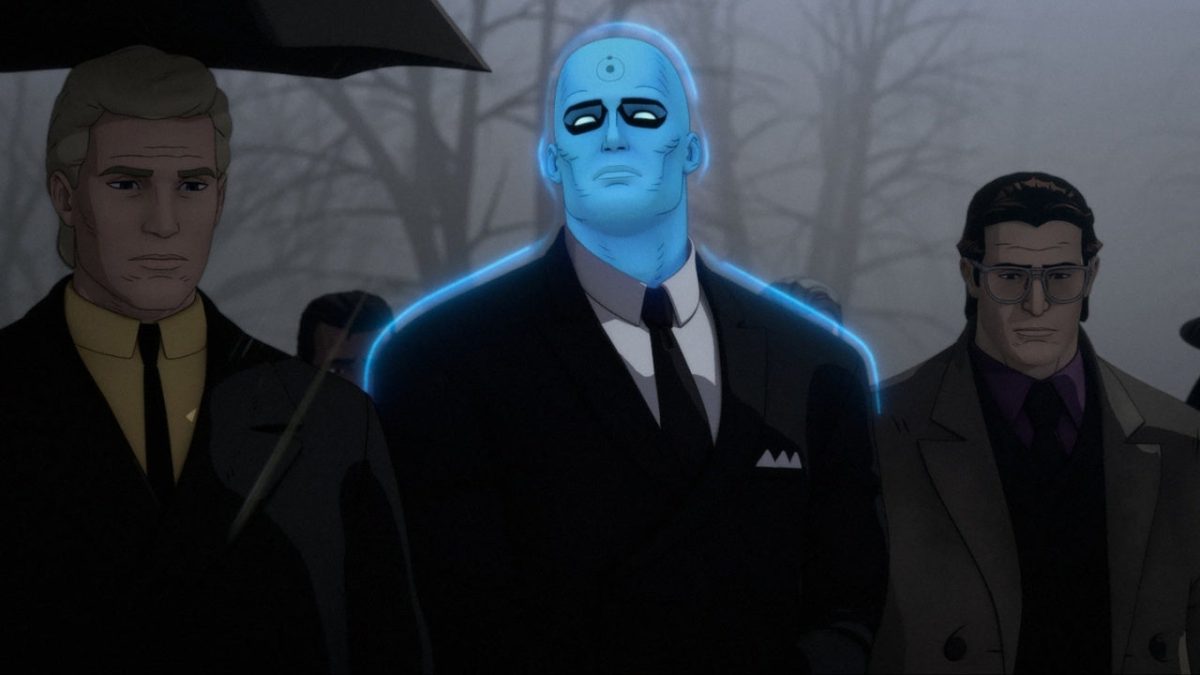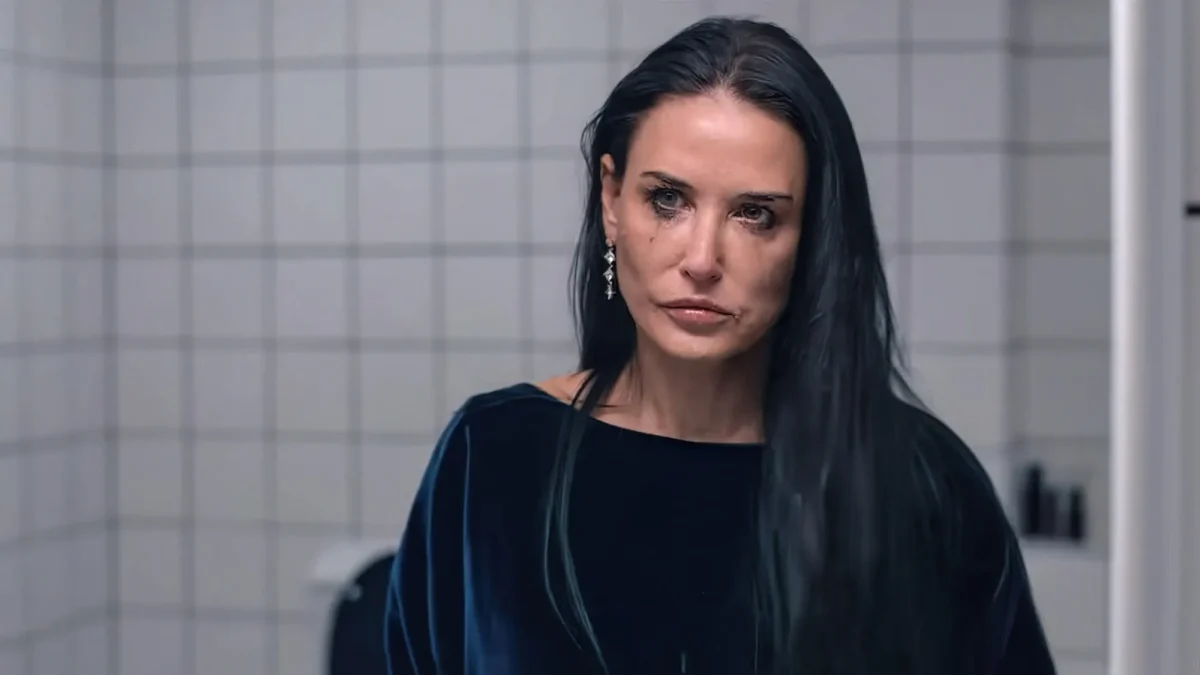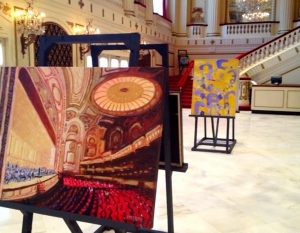
Paintings inspired by rehearsals of the St. Louis Symphony’s performance of Mussorgsky’s music are set up in Powell Hall during performance nights.
As people were milling about this past Friday, paintings by Victor Hartmann were on display at Powell Hall. The highly-anticipated symphony they came for was finally here; Modest Mussorgsky’s “Pictures at an Exhibition” was performed Jan. 25-27.
In 1874, Russian composer Mussorgsky created the suite in 10 movements, as a tribute to his friend Victor Hartmann, an artist who’d passed away the year before. Mussorgsky was inspired by Hartmann’s many paintings, naming the movements after them. Mussorgsky was apparently heavily influenced by Hartmann, and said, “sounds and ideas fill the air, and [I could] barely scribble them down fast enough.”
Originally intended for the piano, the suite was popularized through other musicians’ renditions of the piece, which involved more orchestra. Now, it is performed by virtuoso pianists and orchestras alike.
With a student discount, a few of the suite attendees were, in fact, Saint Louis University students. While not a venue most studentswould choose to visit, Powell Hall is a hallmark of St. Louis. If one even has a minimal appreciation for classical music, Powell Hall is definitely the place to go, since, like concerts, orchestra pieces sound very different when performed live. One can simply focus on the music, and it’s a good way to de-stress while appreciating the fine arts.
The hall was not only ornately decorated, but had great acoustics, and the symphony involved a large variety of instruments. While the movements of the suite are for the most part seemingly disjointed, Mussorgsky’s “Promenade” is what makes it flow.
In his article “Musical Pictures” in the show program, Paul Schiavo states that it “unifies the composition, forms the subject of several interludes between movements and reappears in a few, ‘Catacombs’ and ‘The Great Gate at Kiev.’”
Clearly, there is a strong Russian influence on the music; at parts it reminds the listener of a glorified anthem. Maurice Revel was responsible for the orchestration of the piece, optimizing it for a full orchestra, using instruments that Mussorgsky would never have used, such as the saxophone.
Indeed, the piece itself seems too majestic for one instrument alone; all the other instruments lend something of value to the entire composition.
The paintings that were on display in the lobby of Powell Hall were created last year by local artists. According to the program, these artists responded to a call for artists given by Art St. Louis, a prominent regional organization that has been involved in the arts for more than 25 years; “the idea was for art to inspire art.”
The artists listened to a rehearsal at Powell Hall, and in turn created works inspired by their experience.
The artists were inspired by the pieces they heard at the rehearsal, which were Thomas Aide’s “In Seven Days” and Paul Hindemith’s “Mathis der Maler.”



